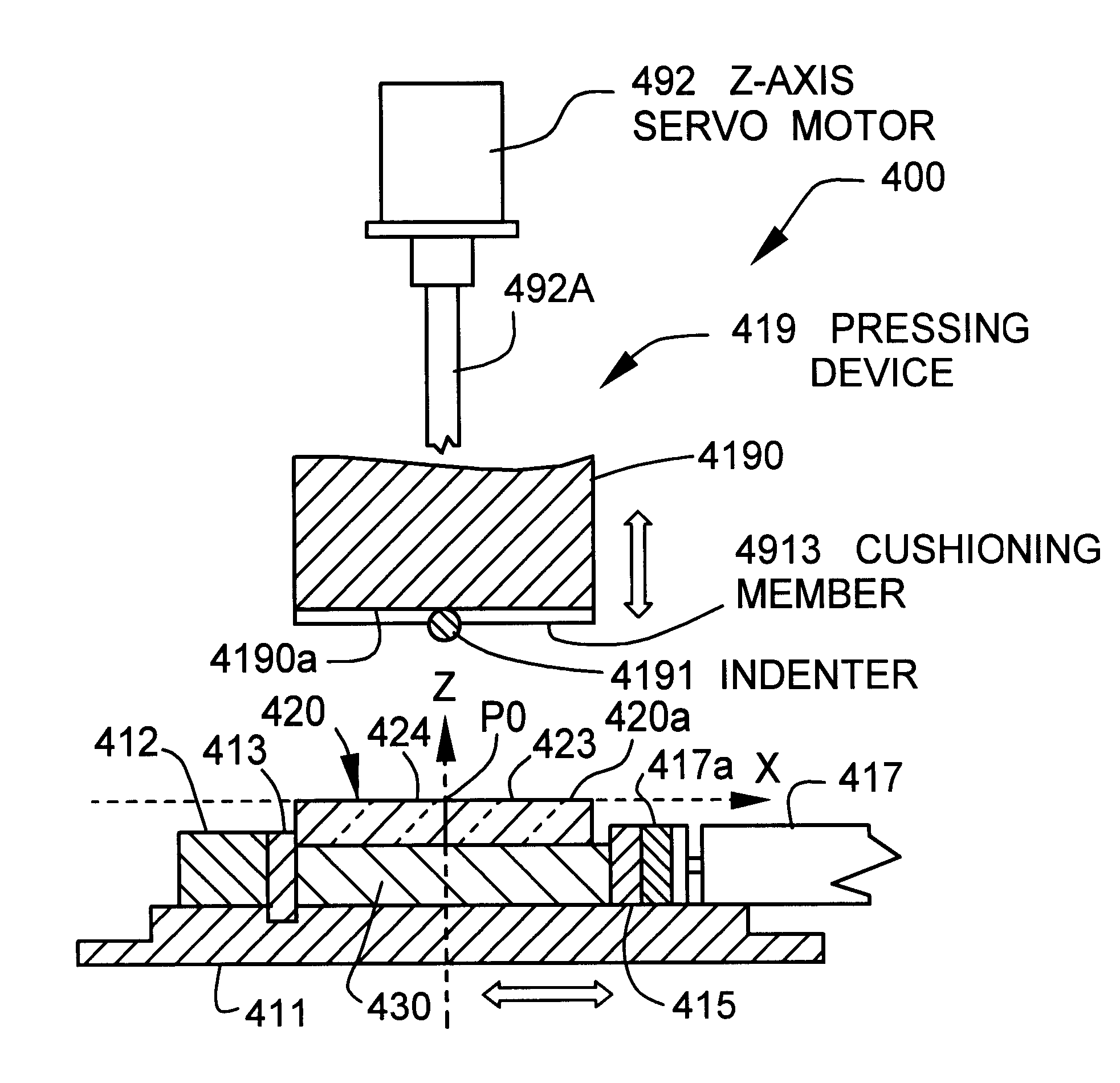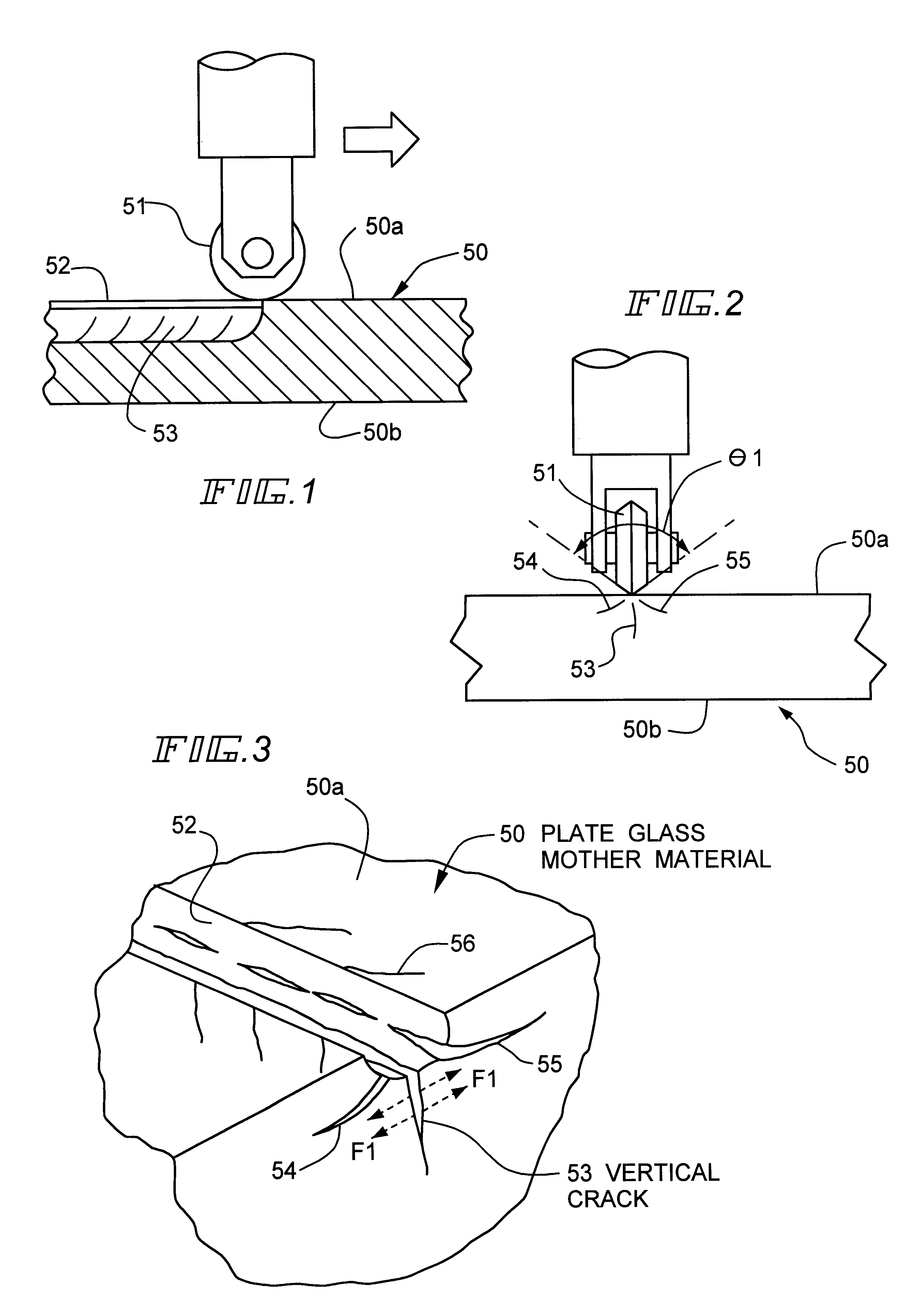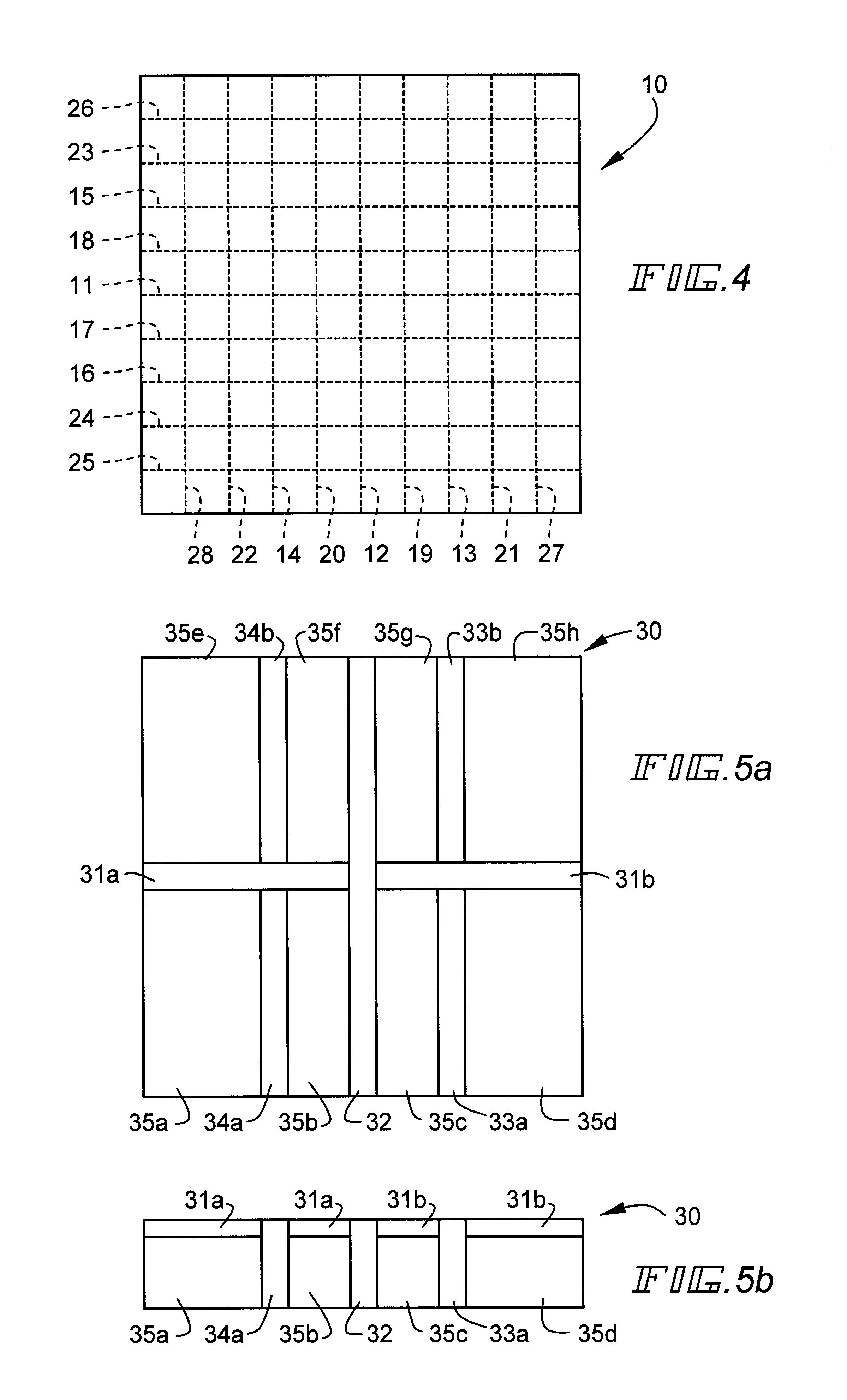Cutting method for plate glass mother material
a technology of mother material and cutting method, which is applied in the direction of thin material processing, metal-working equipment, manufacturing tools, etc., can solve the problems of large-scale manufacturing device, increased manufacturing cost, and inconvenient method for small-scale production of a wide variety of products
- Summary
- Abstract
- Description
- Claims
- Application Information
AI Technical Summary
Problems solved by technology
Method used
Image
Examples
example 1
(1) Preparation of Glass Mother Material
First, an optical glass plate of 85.times.85.times.8 mm (formed of FD8 (glass type name) manufactured by Hoya Corp.) was prepared. The optical glass plate has the size and weight corresponding to those of 100 materials to be pressed (each weight of 2.46 g) in which 0.05 g is included as a margin taken by barrel polishing.
Subsequently, a wheel cutter having a blade portion formed of an ultra-hard material and having a blade tip angle of 130.degree. was used to form 18 grooves in total in one main surface of the optical glass plate, so that an optical glass mother material as a target was obtained. In this case, a load of 5 kgf was applied to the wheel cutter, and the grooves were formed in a lattice shape so that the materials to be pressed uniform in size can be obtained by 100 pieces in total from the optical glass mother material. The linear width of each groove is 1.2 mm, and the depth is 0.2 mm.
(2) Manufacture of Materials to be Pressed
Fir...
example 2
The optical glass mother material having a rattling degree of 0.35 mm was obtained in the same procedure as in Example 1 (1) except that as the material of the optical glass mother material, an optical glass plate of 85.times.85.times.8 mm (formed of BSC7 (glass type name) manufactured by Hoya Corp.), and 100 materials to be pressed in total were obtained from the optical glass mother material in the same procedure as in Example 1 (2).
For the materials to be pressed obtained in this manner, the measured weight ranges and dispersions of measured weights to theoretical weights were obtained. Results are shown with the theoretical weights in Table 2.
example 3
The optical glass mother material having a rattling degree of 0.35 mm was obtained in the same procedure as in Example 1 (1) except that as the material of the optical glass mother material, an optical glass plate of 85.times.85.times.8 mm (formed of NBFD11 (glass type name) manufactured by Hoya Corp.), and 100 materials to be pressed in total were obtained from the optical glass mother material in the same procedure as in Example 1 (2).
For the materials to be pressed obtained in this manner, the measured weight ranges and dispersions of measured weights to theoretical weights were obtained. Results are shown with the theoretical weights in Table 2.
As shown in Table 2, each of the materials to be pressed obtained in Examples 1 to 3 had a small dispersion of the measured weights to the theoretical weight, that is, a high weight precision.
PUM
| Property | Measurement | Unit |
|---|---|---|
| size | aaaaa | aaaaa |
| width | aaaaa | aaaaa |
| thickness | aaaaa | aaaaa |
Abstract
Description
Claims
Application Information
 Login to View More
Login to View More - R&D
- Intellectual Property
- Life Sciences
- Materials
- Tech Scout
- Unparalleled Data Quality
- Higher Quality Content
- 60% Fewer Hallucinations
Browse by: Latest US Patents, China's latest patents, Technical Efficacy Thesaurus, Application Domain, Technology Topic, Popular Technical Reports.
© 2025 PatSnap. All rights reserved.Legal|Privacy policy|Modern Slavery Act Transparency Statement|Sitemap|About US| Contact US: help@patsnap.com



